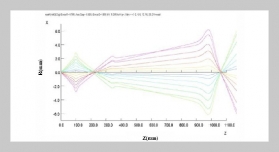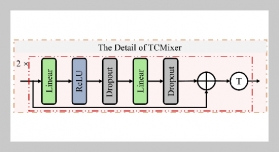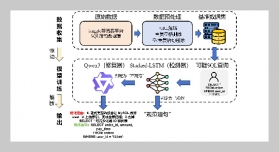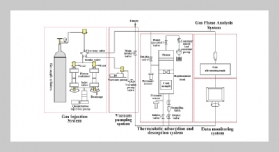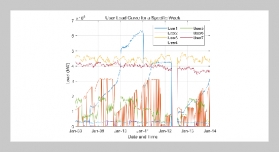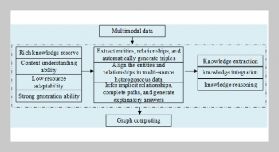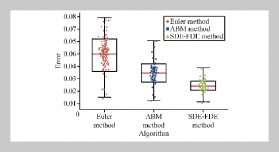REFERENCES
- [1] Abrate, S., Impact on Composite Structures, Cambridge University Press, Cambridge, UK (1998). doi: 10.1017/ CBO9780511574504
- [2] John, K. and Venkata Naidu, S., “Chemical Resistance Studies of Sisal/Glass., Fiber Hybrid Composites,” J. Rein. Plast. Comp. Vol. 26, No. 4, pp. 373�376 (2007). doi: 10.1177/0731684406072524
- [3] Abdul khalil, H. P. S., Hanida, S., Kang, C. W. and Nikfuaad, N. A., “Agrohybrid Composite: the Effects on Mechanical and Physical Properties of Oil Palm Fiber 14 International,” Journal of Fiber and Textile Research, Vol. 1, No. 1, pp. 11�14 (2011). doi: 10.1177/ 0731684407070027
- [4] Noorunnisha Khanam, P., Mohan Reddy, M., Raghu, K., John, K. and Venkata Naidu, S., “Tensile, Flexural and Compressive Properties of Sisal/Silk Hybrid Composites,” J. Rein. Plast. Comp., Vol. 26, No. 9, pp. 1065�1069 (2007). doi: 10.1177/0731684407079347
- [5] Sreenivasulu, S., Vijay Kumar Reddy, K., Varada Rajulu, A. and Ramachandra Reddy, G., “Chemical Resistance and Tensile Properties of Polycarbonate Toughened Epoxy�Bamboo Fiber Composites,” Bull. Pure App. Sci., Vol. 25c, No. 2, pp. 137�142 (2006). doi: 10.1177/0731684403024571
- [6] Botev, M., Betchev, H., Bikiaris, D. and Panayiotou, C., Journal of Applied Polymer Science, Vol. 74, p. 523 (1999). doi: 10.1002/(SICI)1097-4628(19991017) 74:33.0.CO;2-R
- [7] Gassan, J., A Composites Part � a: Applied Science and Manufacturing, Vol. 33, No. 3, p. 369 (2002). doi: 10.1016/S1359-835X(01)00116-6
- [8] Ku, H., Wang, H., Pattarachaiya Koop, N. and Trada, M. A., Composites Part B-engg. Vol. 42, p. 856 (2011). doi: 10.1016/j.compositesb.2011.01.010
- [9] Joseph, P. V., Joseph, K. and Thomas, S., The Effect of Processing Variables on the Physical and Mechanical Properties of Short Sisal Fibre Reinforced Polypropylene Composites. Compositesn Science and Technology, Oxford (1999, in press). doi: 10.1016/S0266- 3538(99)00024-X
- [10] Glass Hybrid Reinforced Polyester Composites, J. Rein. Plast. Comp., Vol. 26, No. 2, pp. 203�218 (2007). Girisha, C., Sanjeevamurthy, Gunti Rangasrinivas: Tensile Properties of Natural Fiber Reinforced PLA-Hybrid Composites, International Journal of Modern Engineering Research, Vol. 2, pp. 471�474 (2012). doi: 10.1177/0731684407070027
- [11] Joseph, K., Thomas, S. and Paul, A., “Effect of Surface Treatments on the Electrical Properties of Low-density Polyethylene Composites Reinforced with Short Sisal Fibers,” Composites Science and Technology, Vol. 57, pp. 67�79 (1997). doi: 10.1016/S0266-3538(96)00109-1
- [12] Zhong, J. and Lv, C. Wei, Mechanical Properties of Sisal Fibre Reinforced Ureaformaldehyde (2007). doi: 10.3144/expresspolymlett.2007.93
- [13] Resin Composites, eXPRESS Polymer Letters, Vol. 1, No. 10, pp. 681�687. doi: 10.3144/expresspolymlett. 2007.93
- [14] Jarukumjorn, K. and Nitinnat, S., Effect of Glass Fiber Hybridization on Properties of Sisal Fiber�polypropylene Composites,” Composites: Part B, Vol. 40, No. 7, pp. 623�627 (2009). doi: 10.1016/j.compositesb.2009. 04.007
- [15] Joseph, K. and Filho, R. D. T., A Review on Sisal Fiber Reinforced Polymer Composites, Revista Brasileira de Engenharia Agrícola e Ambiental, Vol. 3, No. 3, pp.367�379 (1999). doi: 10.1590/S1415-436620010002 00009
- [16] Ku, H., Wang, H., Pattarachaiyakoop, N. and Trada, M., A Review on the Tensile Properties of Natural Fibre Reinforced Polymer Composites, Composites: Part B (2011). doi: 10.1016/j.compositesb.2011.01.010
- [17] Thomas, S., “Short Pineapple-leaf-fiber-reinforced Low-density Polyethylene Composites,” Journal of Applied Polymer Science, Vol. 57, pp. 841�864 (1996). doi: 10.1002/app.1995.070570708
- [18] Preston, rd, Observed Fine Structure in Plant Fibres, in “Fibre Structure”, Hearle, Jws and Peters, rh (eds), Textile Institute, Butterworths, Chapter 7 (1963). doi: 10.1016/B978-1-4832-0061-3.50013-3



